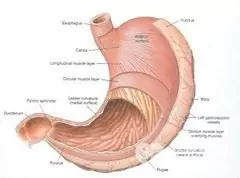- Author Rachel Wainwright [email protected].
- Public 2023-12-15 07:39.
- Last modified 2025-11-02 20:14.
Dyspepsia
Dyspepsia is a combined functional disorder of the digestive system. This is a complex of symptoms common to many diseases, as well as borderline conditions.
Dyspepsia causes

The main causes of dyspepsia are a lack of digestive enzymes that cause malabsorption syndrome, or, which happens most often, gross errors in nutrition. Dyspepsia caused by eating disorders is called nutritional dyspepsia.
Symptoms of dyspepsia can be caused by both the lack of a food intake regimen and an unbalanced diet.
Thus, a disorder of the function of the organs of the gastrointestinal tract without their organic damage leads to functional dyspepsia (alimentary dyspepsia), and the deficiency of digestive enzymes is a consequence of organic damage to the digestive tract. In this case, dyspepsia is only a symptom of the underlying disease.
Dyspepsia in children develops due to a discrepancy between the composition or quantity of food and the capabilities of the child's gastrointestinal tract. The most common cause of dyspepsia in children of the first year of life is overfeeding of the child or the untimely introduction of new foods into the diet. In addition, in newborns and children in the first weeks of life, physiological dyspepsia occurs due to immaturity of the gastrointestinal tract. Physiological dyspepsia in children does not require treatment, and disappears as the gastrointestinal tract matures.
Dyspepsia in older children often occurs during periods of increased growth of the body, for example, in adolescence, and it is associated with an imbalance of hormones (the so-called critical periods of development). In this condition, the gastrointestinal tract is especially vulnerable to nutritional bias, while adolescents often abuse junk food, sugary sodas and foods high in digestible carbohydrates, leading to dyspepsia.
Aerobic training is gaining in popularity every day. Aerobic exercise can lower blood pressure, reduce body fat, and even lower cholesterol.
Types of dyspepsia
Alimentary, or functional dyspepsia is of the following types:
- Fermentative dyspepsia. It is caused by the predominance in the diet of foods with a high content of carbohydrates that cause fermentation (sweet and flour products, honey, fruits, peas, cabbage, legumes, etc.), as well as fermentation products (kvass, mash, sauerkraut, etc.). At the same time, fermentative microflora develops in the intestine;
- Putrid dyspepsia. It occurs with excessive consumption of protein products, especially those that require a long time to digest. This mainly applies to red meats (lamb, pork, beef) and their derivatives (sausages and other meat products), the abuse of which stimulates the development of putrefactive intestinal microflora;
- Fatty (soapy) dyspepsia. Caused by eating too much high-melting fats such as lamb and lard and derivatives.
Dyspepsia resulting from enzyme deficiency is of the following types:
- Hepathogenic (of hepatic origin);
- Cholecystogenic (caused by impaired bile secretion);
- Pancreatogenic (lack of pancreatic enzymes);
- Gastrogenic (caused by a violation of the secretory function of the stomach);
- Enterogenic (the secretion of intestinal juice is disturbed);
- Mixed dyspepsia.
Dyspepsia symptoms

Symptoms of dyspepsia can vary depending on the type of disorder, but there are common signs that are common to all types of disease. Common symptoms of dyspepsia include:
- Unpleasant sensations in the epigastric region (upper abdomen): a feeling of heaviness, distention, sometimes pain of varying intensity;
- Nausea;
- Belching. Occasional eructations may not be a sign of a disorder, but persistent ones indicate dyspepsia;
- Heartburn. A burning sensation in the epigastric and retrosternal region, which occurs when aggressive gastric contents enter the esophagus, which should not normally occur;
- Flatulence. Feeling of bloating in the abdomen caused by increased gas production in the intestines, as well as increased gas separation;
- Stool disorder. The characteristic symptom of dyspepsia is irregular bowel movements, usually more frequent.
Symptoms of dyspepsia caused by a lack of digestive enzymes are as follows: unpleasant taste in the mouth, nausea, rumbling and transfusion in the abdomen, flatulence, loss of appetite, frequent loose stools. The general condition suffers, the patient experiences increased fatigue, weakness, malaise, there may be sleep disturbances and headaches. The feces contain the remains of undigested food in significant quantities.
Fermentative dyspepsia is characterized by rumbling in the abdomen, severe flatulence, frequent loose stools with the release of light foamy feces, with a characteristic sour smell, pain is possible.
Symptoms of putrid dyspepsia resemble symptoms of intoxication: general malaise, weakness, nausea, severe headache. The stool is frequent, the feces are liquid, dark, with a sharp putrid odor.
For fatty dyspepsia, diarrhea is less common than for other types of dyspepsia. Patients complain of a feeling of heaviness and fullness in the abdomen, belching, flatulence and pain that intensifies half an hour or an hour after eating. Abundant stools, whitish stools, contain residues of undigested fat, with a characteristic oily sheen.
Dyspepsia in young children manifests itself with regurgitation, bloating, frequent stools (more than 6 times a day), green stools, contain whitish flakes. The kid is naughty, sleep is disturbed, appetite is reduced.
Diagnosis of dyspepsia
The diagnosis is made on the basis of the study of the characteristic symptoms of dyspepsia, with the carrying out of clarifying laboratory tests (general analysis of blood, urine, analysis of feces for worm eggs, coprogram, study of secretion of the organs of the gastrointestinal tract) and instrumental (fibrogastroduodenoscopy, ultrasound and radiography of the abdominal organs, etc.).) methods for diagnosing diseases of the gastrointestinal tract.
Alimentary, or functional dyspepsia is diagnosed on the basis of the characteristic symptoms of dyspepsia, the establishment of nutritional errors, feces studies in the absence of pathological changes in the gastrointestinal tract.
Dyspepsia treatment

Treatment of dyspepsia of alimentary origin consists in the appointment of a hunger pause, lasting from a day to one and a half, then the gradual introduction of food. Particular attention is paid to a balanced diet and adherence to the food intake. It is necessary to limit the use of foods that have caused dyspepsia. You also need to monitor the drinking regime, the recommended amount of water should be at least 1.5 liters per day.
Treatment of dyspepsia caused by enzyme deficiency consists in correcting enzyme deficiency, for which replacement therapy with drugs containing the necessary enzymes is used, as well as adherence to a diet that relieves the altered portion of the gastrointestinal tract. With this type of dyspepsia, it is necessary to treat the underlying disease.
YouTube video related to the article:
The information is generalized and provided for informational purposes only. At the first sign of illness, see your doctor. Self-medication is hazardous to health!






